If there was any doubt left that actual play is art, GUDIYA puts those doubts to rest.
Awarded Best of The Best at the New Jersey Webfest, Nameless Domain’s GUDIYA is an award-winning horror one-shot using the Bluebeard’s Bride system. In less than two hours, GUDIYA explores the tragically hopeful story of Bluebeard’s latest bride who’s been taken from her home in South Asia to the seat of imperial power: England. The two-part series uses the aesthetics of psychedelic horror to dissect the intersecting violence of patriarchy, heteronormativity, and colonialism — and the ways that violence is internally replicated to survive those systems.
GM’d by Josephine Kim, with a cast of rising stars like Hamnah Shahid, Noordin Ali Kadir, and RK Wilde, and a production crew including Gwendolyn Kelly and Stella Luna; GUDIYA exemplifies what actual play scholar Dr. Emily Friedman refers to as the medium’s “ambitious middle” — those attempting to push the bounds of what this still developing medium can do, even without big budgets like those of Dimension20 or Critical Role.
While still operating from the limitations of virtually recorded sessions, GUDIYA utilizes those limitations as storytelling tools. The dynamic, award-winning overlay designed by Stella Luna acts as a practical device, isolating characters during their individual scenes, but also as part of the narrative – we can see the titular Gudiya slowly unravel as her world collapses around them.
The Fandomentals sat down with the cast and crew of GUDIYA to talk about intentionality in actual play, anti-colonial explorations of gender, and the practice of hope amidst the horrors of our world.
Though this is a bit of a longer interview, I implore you to read to the end. Without a doubt, this is one of the most – if not the most – powerful interviews I’ve done to date.
And still, this interview was edited for length and clarity.
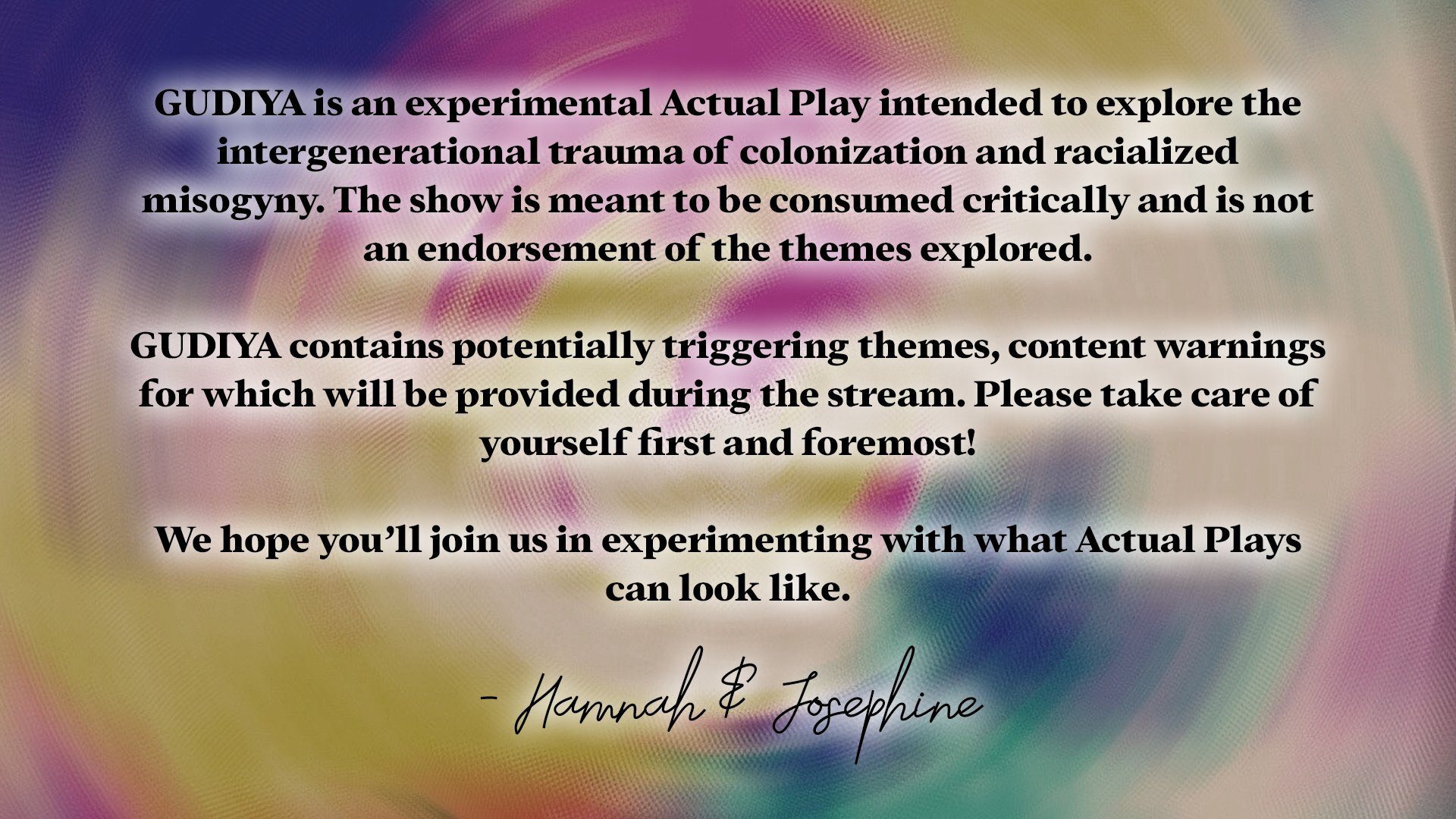
The subversion of mythology is a really, really big part of GUDIYA and this story in general, both the mythology of heteronormativity and colonialism, but also the triple goddess imagery from a lot of different cultures. Specifically with these characters, the Bluebeard’s Bride system enables you to choose from like five different facets, but you guys only chose three for this story. And I kind of wanted to know the process of why you went with three and why you chose the three that you did.
Josephine Kim: Hamnah actually has just a general TTRPG philosophy for more intimate stories.
Hamnah Shahid: Yeah, it’s a hill that I will die on. In APs where the point of the story is to really dive into the characters, their internal worlds, and their relationships to each other, I strongly believe that the optimal number of players for an AP with a GM is three.
The reason for that is: I treat the GM (who is also kind of stepping in as the plot, the world, etc) as another character. So really and truly, APs with three players and a GM have four characters in the story that you have to give room and spotlight for. So, in traditional APs where we see four players or five players, I personally think there isn’t enough space in the story and the limited time that we have to really deep dive and explore each individual character’s arcs. So for me it was more so a logistical ethos that I have around APs.
I love that, especially in the context of this really short form, two hour long piece as opposed to an ongoing campaign or even a 10 episode series. You have a little bit more room, but this is really streamlined.
Hamnah: Yeah, we don’t have a lot of time. So given that we have so little screen time to share amongst the four of us, I strongly believe that lowering the number of people at the table really helps to tell a resonant story.
From the logistical end to the more narrative end, how did you choose the three facets of the bride that you ended up choosing?
Josephine: It was completely up to the players what they wanted to choose. So why did y’all choose the ones that y’all ended up with?
Noordin Ali Kadir: In terms of facets, we were all split between two, which I think is a fun thing to mention. I was stuck between mother and witch.
Hamnah: Hilariously for me, it was mother and fatale.
RK Wilde: For me it was witch and animus.
Noordin Ali: Yeah, I think all of us decided right from the get-go, there is no virgin here. Our version of Gudiya is not an innocent, unfortunately. For the mother, I drew from my own grandfather, who is where I get my compassion from. Compassion is often attributed specifically to women and not to men. Both me and my sister learned our more compassionate tendencies from our grandfather. And I know many people who have learned their compassion tendencies from their father, from other male figures. I don’t think it’s healthy to attribute that only to one gender. Gudiya has compassion like a woman would have, but her compassion is learned specifically from a male figure in her life, And that doesn’t change the actual result, doesn’t change her compassion. All it means is that, the person that she reaches to and reminds herself why she is compassionate is a sad old man.
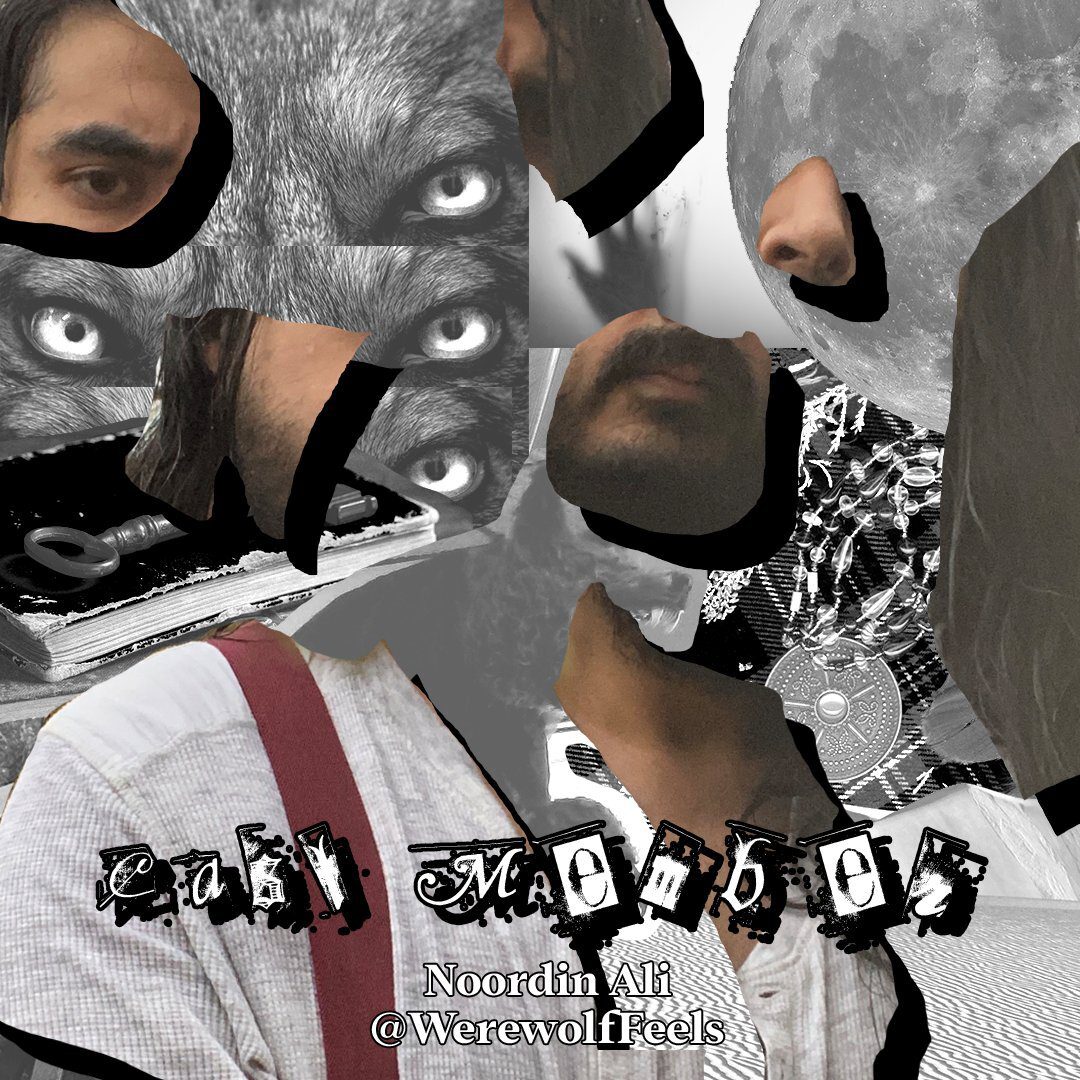
Hamnah: It was really interesting though, because for Noordin Ali’s facet specifically, we actually changed the mother. Originally in Bluebeard’s Bride, the mother is the body of the bride, right? We were all talking and since we are telling a very deeply South Asian story, we had all agreed our noses are kind of a big ethnic feature and a source of, I would say, ridicule in the context of Eurocentric beauty standards. You know, our noses are too big or too crooked or too whatever, right? So we were talking and it just didn’t feel right to omit the nose as a facet of a bride, given how important it is in the context of the story that we’re telling.
Ultimately, we decided to change the mother from the body to the nose, and that allowed us to then really hone in visually on just the face in general, in terms of the overlay. So you can see when Stella made it, it is just the face of the bride and not the body for that reason.
RK: I know for myself when it came to picking the witch who represents the hair of the bride, that was something that was very intentional, as everything with this show was. For our session zero, we had a really in-depth conversation, the four of us, about how deep into themes of colonization and our own culture we wanted to get.
And all of us were pretty much on the same page of like, we wanna get into it. We’re in a space where we felt comfortable to get into it. So hair is a huge thing in Indian culture, especially when it comes to women. I know that my own mother, before she got married, her hair was down to almost her ankles. She had never cut it in her entire life. Within my own culture, my hair (as someone who is non-binary and was raised male) I have such a strange relationship with my own hair. That was something I really wanted to explore, especially through the lens of how hair can be empowering.
We spoke about the hair and the nose. Hamnah, what body part does the fatale relate to?
Hamnah: So the fatale is the lips and the lips specifically, though for me the consideration of the fatale was not so much to do with that body part in particular as it was with the fatale in general. The fatale is meant to be this facet that uses sexuality as their power right? That’s the whole point. And I think that in particular is a reason that I wanted to play the fatale. In South Asian culture, depending like what religion you’re kind of embedded in, sexuality can be a really, really complicated topic. For me growing up, that was very complicated and continues to be in terms of my culture, my family and whatnot. You know, you don’t talk about sex, you don’t have sex until you’re married. It’s like a whole thing.
I really wanted to play with that idea of sexuality as a power that women have, because even in our culture, one of the main powers women have is still their sexuality, even if it is so taboo in the way that it’s wielded, which makes it really complicated. I really wanted to tease apart the paradox in that: you’re not supposed to be a sexual being, but also as a woman, your sex is really the way that you wield power in relationships and in your relationship to men in particular. And that’s inherently contradictory.
Absolutely, and I think you navigate that multiple times throughout this story, the relationship of being viewed as a sexual object, utilizing that as power over the people around you. And then how can you alter to match these standards that are not my own, but will give me power and safety.
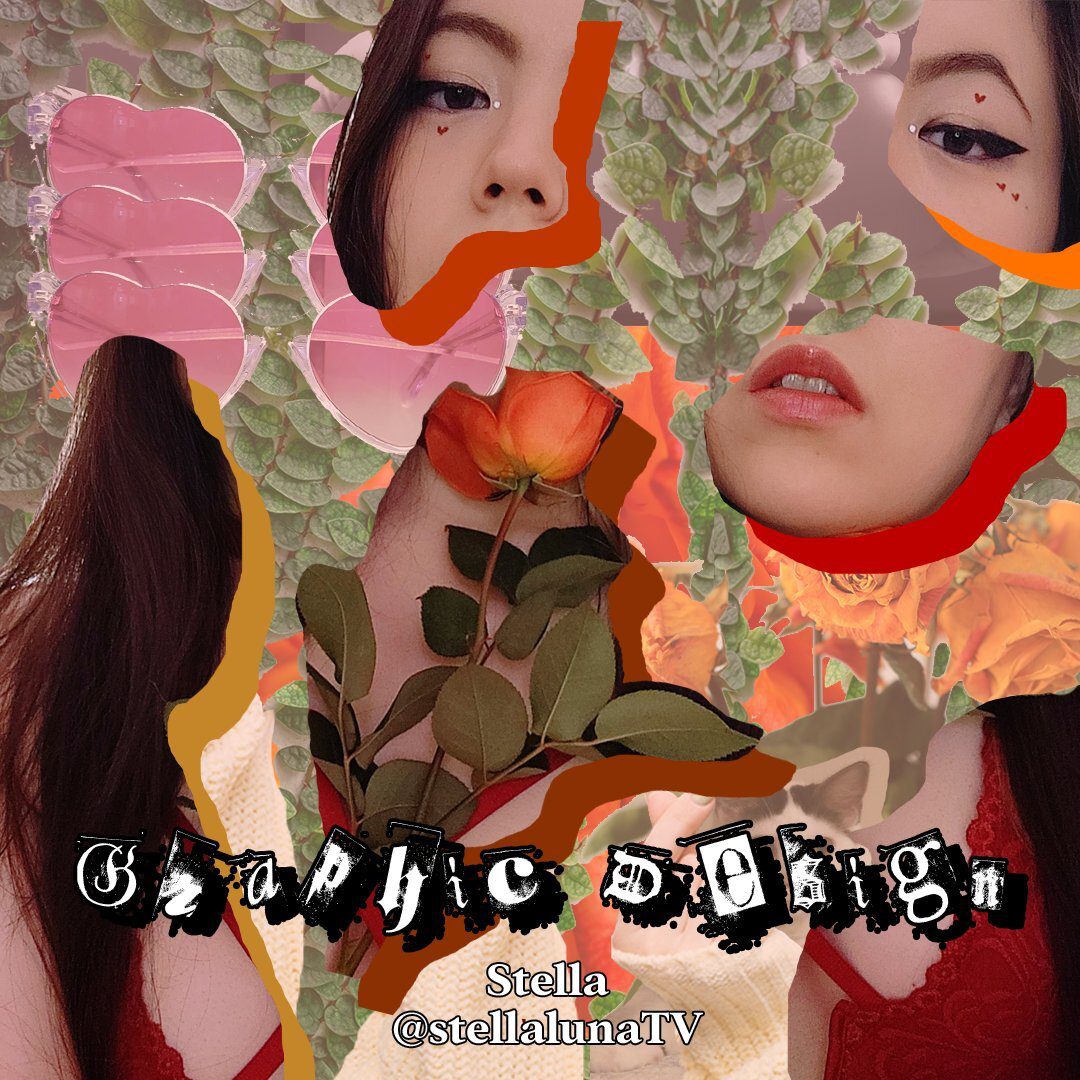
Talking about these body parts in relationship to the visual imagery of the overlays specifically. Stella, could you speak a little bit to how that conversation happens and how the visual language of the overlay adds to the story?
Stella Luna: Yeah, I think what’s really important to mention is how we started this conversation, both between the production side and making it something that we can put onto the overlay. This idea of surrealism and collaging different parts of people through objectification, separation, dislocation, essentially breaking down the pieces of ourselves and trying to pull out the meaning of things, the meaning of pieces.
The playbooks that everyone chose really helped me focus on the different parts breaking apart, coming together, and the interaction between those pieces. It’s such a profound part of Bluebeard’s Bride and just the interaction between the different players and their facets. When I put together the overlay, I played a lot into the idea of the meaning behind the imagery. What do you do with your hands? The power of your hands. We put some fingers in the background. We put some tongues, some mouths, some flowers; the relationships between those things and what they mean.
There’s a lot of depth that goes into surrealism and the context of which you present things really determines the undertones of it. So we had gratuitous sexual undertones in the pieces that were chosen. We have the sense of smell, which can be very sexual. We have the mouth, we have the lips, we have the eyes, the hair, all those different pieces.It depends on how you use it, right? As we were talking about, those are pieces of power as well.
It was very, very purposeful to make sure that we have an accurate representation of the flowers that are being used. Are they culturally relevant? As well as making sure there’s an injection of a lot of color and a lot of movement, essentially trying to marry all of those pieces together.
They’re very dynamic, especially in the moments of transition between a full cast and the individual like, sides almost, for the production side. Could you guys speak to that element of, instead of choosing to keep everyone on screen at all times, highlighting these individual scenes between Joe and the individual character in the moment? What was that thought process like, and why did you go with that route?
Josephine: With each of the playbooks, we focused on the way people can influence our gender and the way that our identity can be formed from other people, how our community can form our sense of responsibility over others. So, Noordin Ali was a grandfather that the bride actually had. RK was playing a witchy aunt. And then Hamnah was playing like a rich woman, a free woman, that sort of concept.
With each of the individual stills or scenes with me, we get to see that. Like for the Fatale, there’s chilies. We get to see more of the lips and things like that. And for RK we get more of the magical haunting side, but also with hair. It really reminds me of The Ring. There’s a hair scene that’s fucking awful. Hair, again, can be so powerful to even utilize in horror.
Hamnah: It’s interesting thinking about how we came to the visual language of the show. When Joe and I originally sat down to talk about it, one of the things we did was we sat down and listed all the things that we think APs do really well, and all the things we think could be improved.
And of course that’s subjective, right? But one of the things that Joe and I agreed on is the static overlay. That’s great for a specific type of story that you’re telling, but what it lends itself to is that people will treat your show as a second monitor media. They’ll throw it on a second monitor and they’ll listen to it while they do something else.
Which is fine and great if that is the way you want to consume your AP. But it does mean that there is a loss of potential because APs are inherently, in this format, a visual medium, right? But we’re not using the visual medium. So we started thinking, what are some ways that we might be able to play around with the visual of an AP so that we can make it so the visual aspect of the show is actually necessary for understanding the show; that if you’re not watching it, you’ve missed some of the metaphor. You’ve missed some of the visual storytelling, some of the language, borrowing from movies and TV shows a little bit. And we are limited, obviously, by remote APs in terms of the format of how we can do that. But that was an interesting challenge that Joe and I agreed that we wanted to take on.
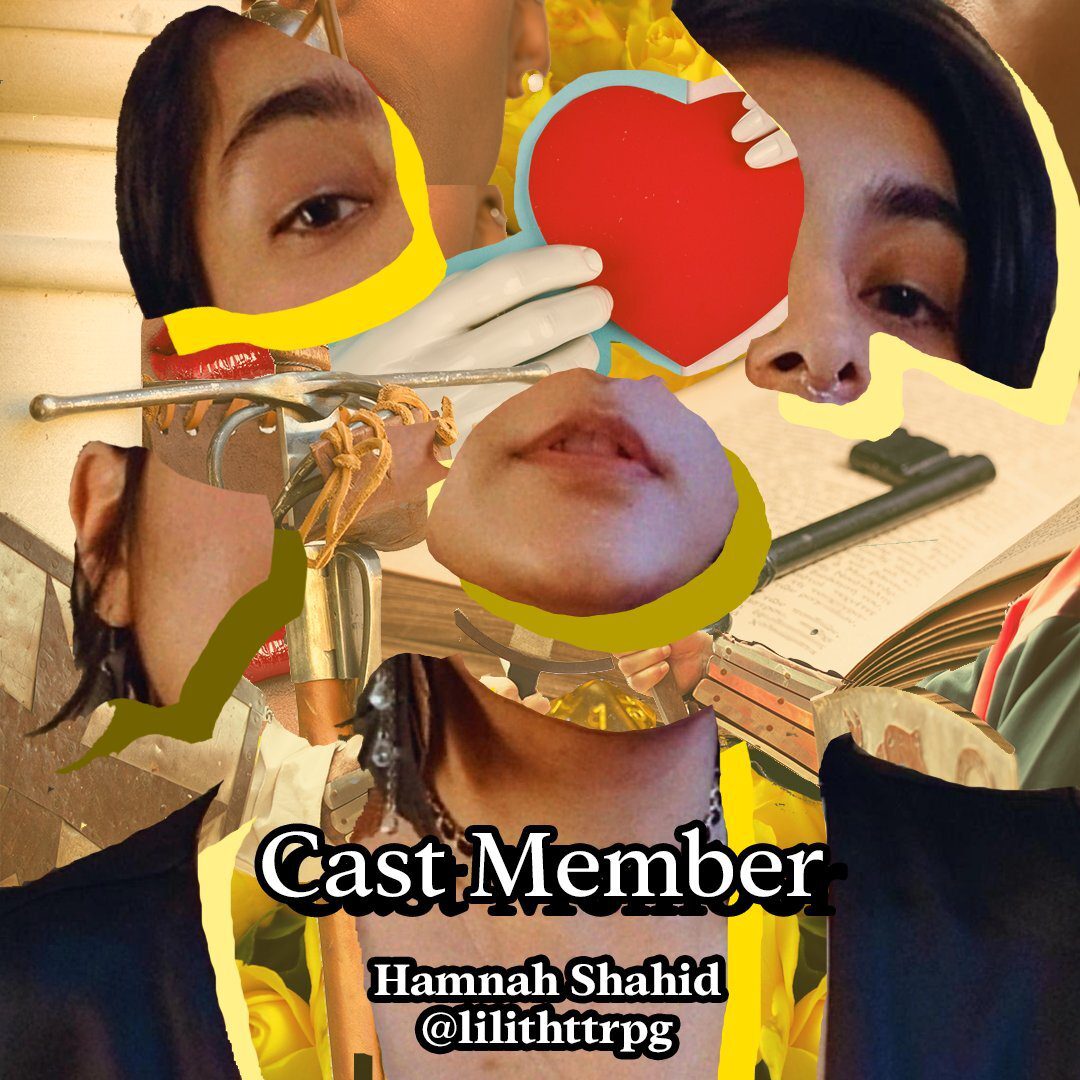
Josephine: Another thing we were like was the marketing has to be interesting. It has to be unhinged. It has to be fucked up. Gwen, I want you to talk about how that had a plan that spanned months, right?
Gwendolyn Kelly: Yes, and continued post-production as well. I thought that was also very important for us to continue showing off the show. When we started conceptualizing what the actual marketing strategy was going to be for GUDIYA, basically I got vibes thrown at me. This was before Stella had actually gotten into the weeds of actually making the overlay. The important thing for me when thinking about how we bring people into the show was that the marketing has to make you feel the way that the show is going to make you feel in some capacity. That is something that I feel that a lot of marketing for shows doesn’t actually do super well.
While I’m not using clips or anything, I am trying to bring in the feeling of that weird psychedelic sort of torn apart, put back together thing. That’s why when we did the cast and crew reveal, everybody was dissected. We wanted to make it a little disorienting, but also put in hints to like, you could figure out who this is. And also you could figure out what the role is in this show because we also made the explicit decision not to tell people what game we were playing.
We very specifically were not going to say we’re playing Bluebeard’s Bride until we air the show. We wanted you to show up because of the contents, we don’t want you to show up for system. We want you to show up because this is something that you are interested in because it’s weird, because it is telling a story that we don’t get to tell very often. We were sort of in a unique position to do that.
Noordin Ali, you mentioned this a little bit before in the gendering aspect of these different facets. There’s definitely a version of the show that has an all cis woman cast. And that’s not this one. And why is that?
Hamnah: I want to hilariously point out, none of the cast members are cis women.
Noordin Ali: To be fair, that wasn’t always the case. I think it’s fair to reveal that I was, I actually was covering for a cis woman, and now it’s me. I was asked a week before the actual session zero started. So it was very much like, I don’t know the reasons why I was cast.
Hamnah: I can tell you the reasons if you’d like. Actually, hilariously, gender was not a factor in Joe and I’s casting process at all. And correct me if I’m wrong, Joe, if you were thinking about it and I just didn’t verbalize it to me, but at least from our conversations that we were having, we actually didn’t really consider gender very strongly in our casting process, it was more so we were thinking about content and tone of the show.
And we were mostly thinking, okay, who is around that we think would be comfortable with like Going There with us and who is comfortable with horror as a genre? Then we kind of went from there.
I think it’s really fascinating. The fact that there are no cis women in this cast and that you are engaging with femininity in such a complex way, in such a nuanced way that like, there really is no singular monolithic version of femininity that is tied to any kind of body. And one of the things that really, really stuck out to me was the moment in the very, very beginning, Joe, where you asked Noordin Ali’s mother character, are you a woman? And you reply, “Gudiya is a woman.” What was that moment like playing the game?
Noordin Ali: I was warned, “Okay if you’re gonna play a masculine facet we’re gonna have to discuss it at some point.” I think the answer was early on we decided that Gudiya’s pronouns were she/they. They’re not a cis woman, just like the cast.
RK: We had a moment of like, Gudiya, if she was in a different time and a different place, would probably have identified as non-binary or somewhere along the spectrum. But because of the world she was in and the place and what she was going through, it was more that the perception of Gudiya as a cis woman was placed onto them as like a label and a box they had to conform to. That was very intentional when we were discussing gender and everything.
When it came to the session zero, we recognized there were no cis women here to play this. And so we leaned into the element of our own queerness as a cast and the way that each of us individually have dealt with femininity and how it plays into things, especially when it comes to 1) the Eurocentric gaze and 2) the South Asian community.
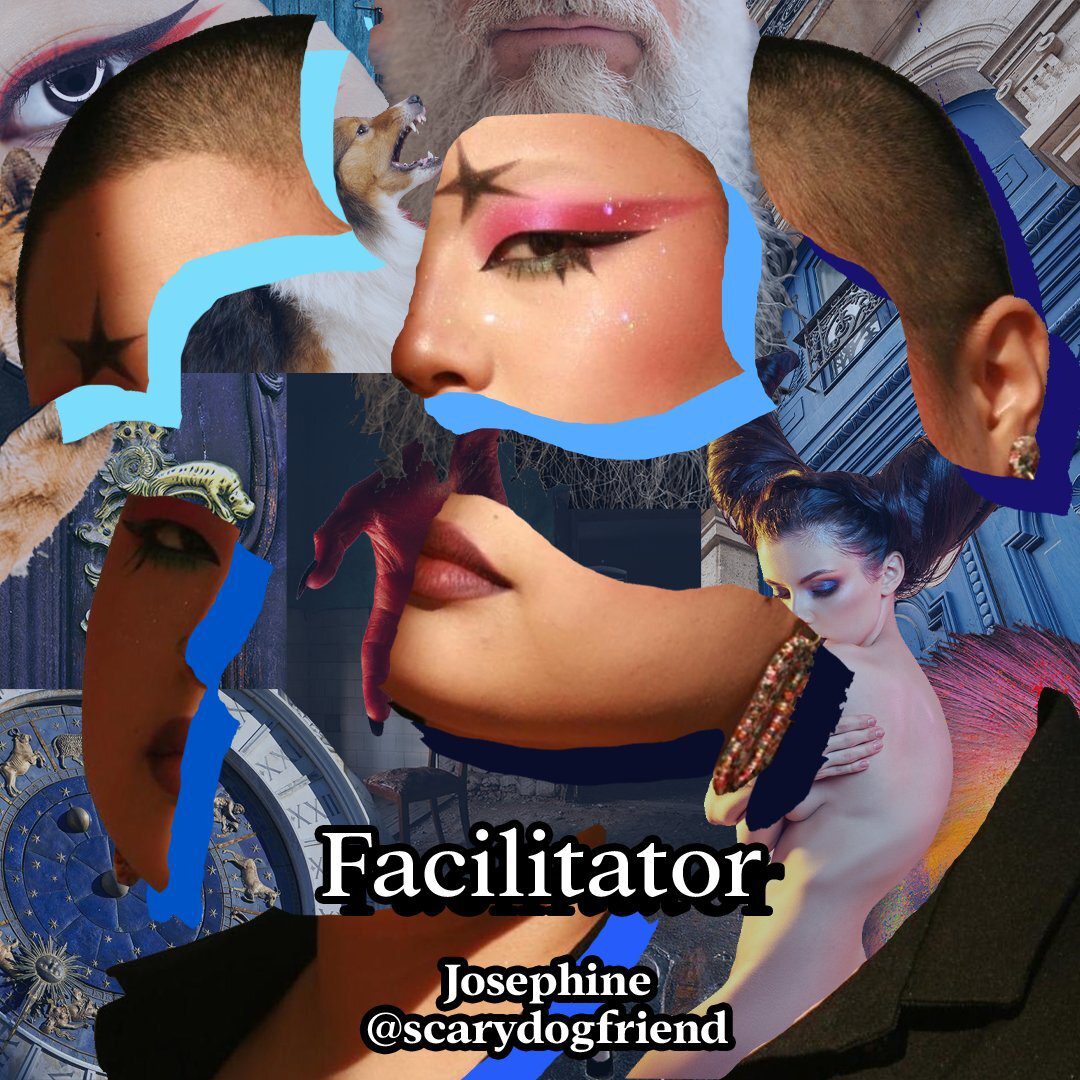
Josephine: Yeah, one thing I remember from the acceptance speech [for Best of the Best at the New Jersey Webfest], I wanted everyone to really ruminate on this fundamental truth that, because of colonization and everything, no one has ever enjoyed being a woman.
The whole show is very much a love letter to women who know they have, in very different ways, the cultural understanding of masculine and feminine, without also necessarily gendering the parts in their bodies. But understanding that like there are cis men and cis women who exist where that can be so ingrained in part of your world.
Gender very much, to me and what I think it means to be a Korean queer trans person is like: what I provide, what I do, how I educate people. It’s like a fun balance of, is gender who you are or is gender what you do? It’s what you do.
There’s this Margaret Atwood quote, “You are not a woman, you are a woman with a man inside watching a woman, you are your own voyeur.” And I think this really gets extrapolated a bit when you add on the intersecting layers of colonialism and patriarchy together. This is not just adherence to any type of womanhood, but to a specific kind of womanhood and the horrors that it brings with it.
Noordin Ali: That’s the thing with a lot of Bluebeard’s Bride in general. You start off as a woman, but the intention of Bluebeard is not to have you as woman, it’s to have you as a specific woman. Joe’s a fantastic DM, but sometimes you’re not so lucky. Depending upon who your GM is, that definition of womanhood can differ.
That’s the reason why those facets are named in the beginning, like those, what does your body look like? What do your hands look like? What does your hair look like? It’s so that those elements of yourself can be either stripped away from you or groomed into something that Bluebeard finds acceptable. Because it reflects a lot about how we view gender, especially the feminine gender. It is a thing that happens to dudes too.
There is a certain level of “To be a man, you have to be this.” And I realized that I’m the only cis man in this group, but I will say this: I didn’t always think that I was a man because the way I was told men looked and existed and experienced was not my lived experience. And that made me sad, because I wanted to be a boy really badly. And I, apparently I was not. And then I grew up and realized, no, that’s all bullshit.
GUDIYA specifically, because we knew we’re going in that Bluebeard’s does that, we said, ah, so the kind of woman that Bluebeard wants is the kind of woman that Gudiya cannot be. Not only because Gudiya is not truly a woman, but also because Gudiya is a brown person infused in community and family and values and ideals that are not Bluebeard’s, right? It’s not just the physical aspects of her that do not fit. It is her essence.
Hamnah: There’s this very culturally specific idea of gender that is different from this white idea of gender that is almost inherently queer. The idea of being a man or a woman is so vastly different in my own experience than the way that I’ve been told it should be by white people.
Almost inherently, I feel like simply by existing, even cis men and women queer gender in specific ways in traditional pre-colonial South Asian culture, stripped away from sort of the, the British specific influence on it.
That’s something that’s really hard, I think, to communicate. We’re playing in this weird space of like, what does it even mean to be a specific gender and are there even boundaries between them or not? And it’s just such a complicated, difficult thing to communicate.
But that was, part of what GUDIYA was trying to showcase. A more culturally specific idea of what it means to exist when gender is being forced upon you. And how that has rippling effects from generation to generation.
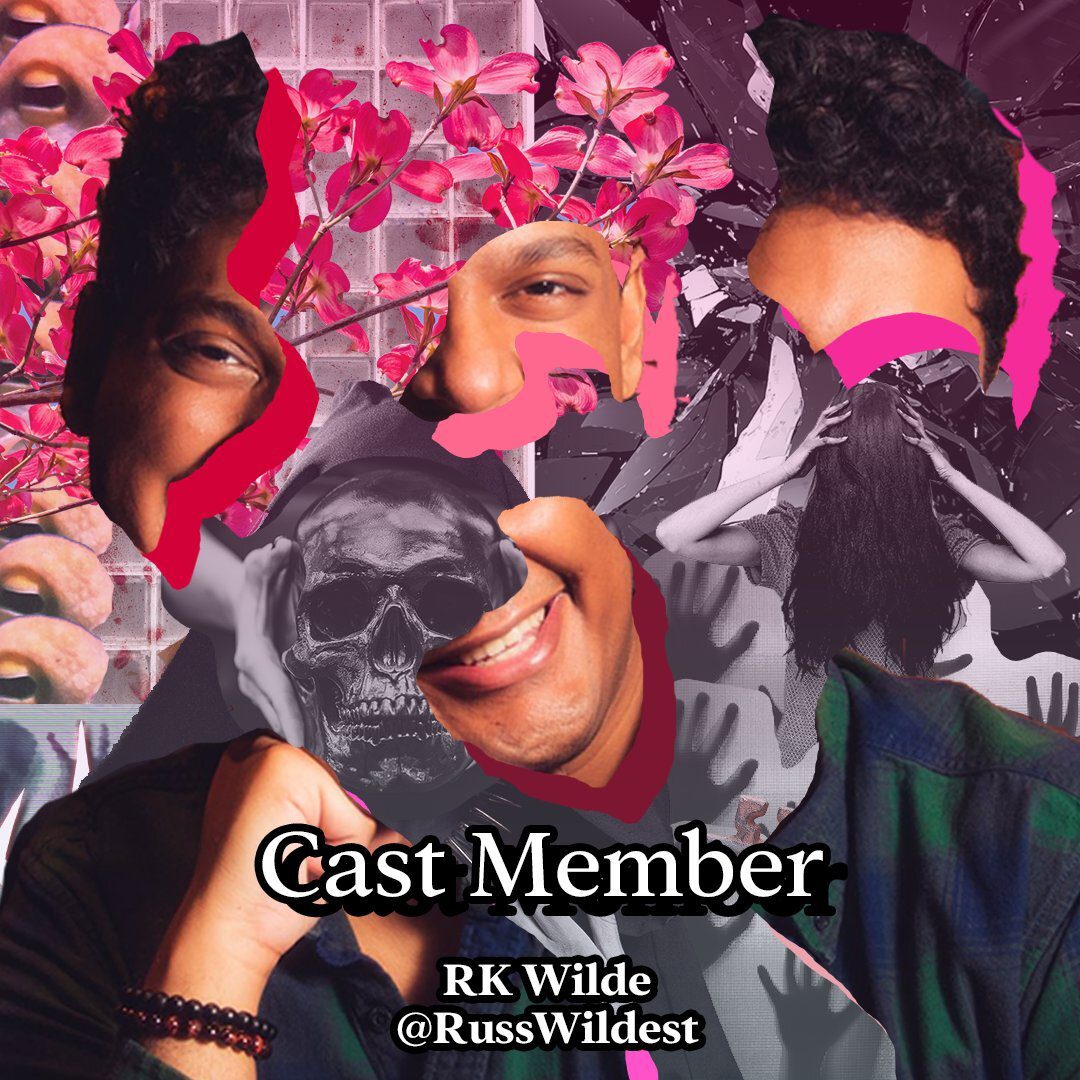
RK: I think that also there is an aspect of gender that’s formed with community, which is different in both aspects. I think about how that sort of plays out, especially when it comes to Jo’s opening narration. The way that it starts is that you hear about what the wedding was like and all the family surrounding Gudiya and being a part of her life and being there being happy. Then when the story starts she is firmly ripped away from that and that community
In that process, she loses the sense of community that gives her gender and used to be the ones who perceived her, as I mentioned earlier, and is now thrusted into a Eurocentric habitat. I said habitat, but I mean it’s a little bit like an enclosure.
I mean, she’s in a little bit of an enclosure. She kind of is like, they are kind of being like, as a zoo animal a little bit, which is fucked up, but kind of how they’re being displayed.
Noordin Ali: Like a peacock
RK: The peacocks, yes, exactly. That’s why my brain jumped to habitat. Like you said, it is kind of like a zoo there and how she’s thrust there and the now Eurocentric standards are thrown at her.
I think another element that we also discuss very lightly is the pressures from our own communities that have been colonized to conform to colonization. There was a part of the game where we discuss the braids that our hair is in and the clothing that is cinching our body tightly. Not because it’s part of our culture, but because we are, even our own family wants us to fall into the Eurocentric standards that are placed upon us because they believe that is our best method of success, that is our best method of surviving. And that is also the way our community looks at gender.
Noordin Ali: It’s important to mention that this is not an isolated case or purely fiction. This did happen to multiple Brown women and other women in ant place that’s been colonized. And not of course, just women, but usually women who are brought into these societies and had to conform to the point where a lot of them lost their own identities or obfuscated their own identities.
To which eventually their families forgot they were other people, that they came from other cultures. And now their ancestors still walk around today saying, well, I’m white because everyone in my family is white, even if there’s a non-white person, intrinsically part of that family. It’s a real thing, especially with how India was colonized.
There were non-male, non-female genders in pre-colonial India, too. It’s really complex how the British ideal of what a man and what a woman is and how there is nothing else affects, like, the people sitting at this table right now. All of us have had an aspect of that attached to us. In fact, most people now do.
And I think the way GUDIYA challenged that, the inherent unnatural nature of having that forced upon you, is one of the coolest experiences I think I’ve gotten to be a part of. I couldn’t speak for the others, but it’s a really wonderful thing to sit down in a conversation through a game and kind of untangle.
There’s something so profound with the horror genre in general. The horror genre is about taking a real cultural social horror and amplifying it into a grander than life fashion. But amidst all of that horror and all of that like self-sacrifice that you were just mentioning for the sense of safety, there is this like a glimmer of hope kind of woven throughout it.
You have the moment of the scene where Gudiya’s lover is present in a flashback and there is this moment of respite. And then at the end, it is a tragic ending, but they get to live their own life to a degree. What, in bringing that hope and in bringing that levity, even amidst all this horror, what are you trying to leave viewers with in instilling that hope into this horrifying story?
Josephine: Hamnah talks about how hope is a skill, like a practice, that sort of thing. I feel like that very much sinks into the story. This is a story that ends with a bittersweet hope. The story of Bluebeard’s bride and the actual gameplay of it, depending on the different outcomes that you happen upon, don’t all end amazing or fantastic. The fairy tale doesn’t wrap up nice and sweetly, but this is a world where colonization still exists. There are still like people like Bluebeard who seek out and objectify young women and attempt to marry them or other horrible things. But in all of that, still being able to be in a place where you can love someone, you can overcome what it means to marry someone that you actually love and become more comfortable with your gender, even if some things die and are left behind.
Hamnah: To give credit where credit is due, the specific quote is, hope is a discipline. And it comes from Mariame Kaba, who is a police and prison abolitionist in the States. She talks a lot about this idea in order to work towards this better future, this better world, whatever that means to us.
Rage is an important emotion, but we have to be able to cultivate hope as well because without that we will just fall into despair. People keep asking her, “Do you actually think that you will be able to achieve what it is that you want to achieve?” And she says, “Of course I do. Of course I do. Because if I don’t believe that, then what am I even fighting for?” If we don’t believe that we can actually have better lives, that we can bring about positive change, then why are we fighting in the first place?
And as part of that, in order to actually truly have that belief and to be able to act on it, you have to cultivate hope. You have to have community, you have to stand with other people, and you have to be able to work together with them in order to bring about something better. And I think ultimately for me anyway, GUDIYA is a story about sort of that.
The way in which colonization in particular has fractured our communities, has forced us to make really difficult decisions for ourselves and for the people around us, for our families, not great decisions, but survival-based decisions, right? And how, in the midst of that, how do you retain any aspect of your identity, both individually, culturally, and communally? And is there a world in which we can be free of that? Is there a world in which we can break from that intergenerational trauma?
I personally do see the ending of our story anyway, as kind of hopeful in that direction. Like Joe said, a part of you had to die because a part of you was killed by this white supremacist ideal, right? I think it’s very notable that it was the compassionate part of Guriya that died, right? That part died while she was in there, but she was able to escape and she was able to live a life without him and in this way, like, partially without this influence. And I think that is kind of a very realistic, bittersweet kind of ending for her story, because that is what happens today.
I think it would be disingenuous to have had a version of this story where there wasn’t some sort of lasting effect on Gudiya as a character, because that is not how colonization works. There is no world in which that doesn’t touch us, right? But that doesn’t mean that we can’t shed it in a significant way. That doesn’t mean that we can’t move on from it for ourselves and help each other do that too. And so for me anyway, I kind of see it as a very realistically hopeful kind of ending.
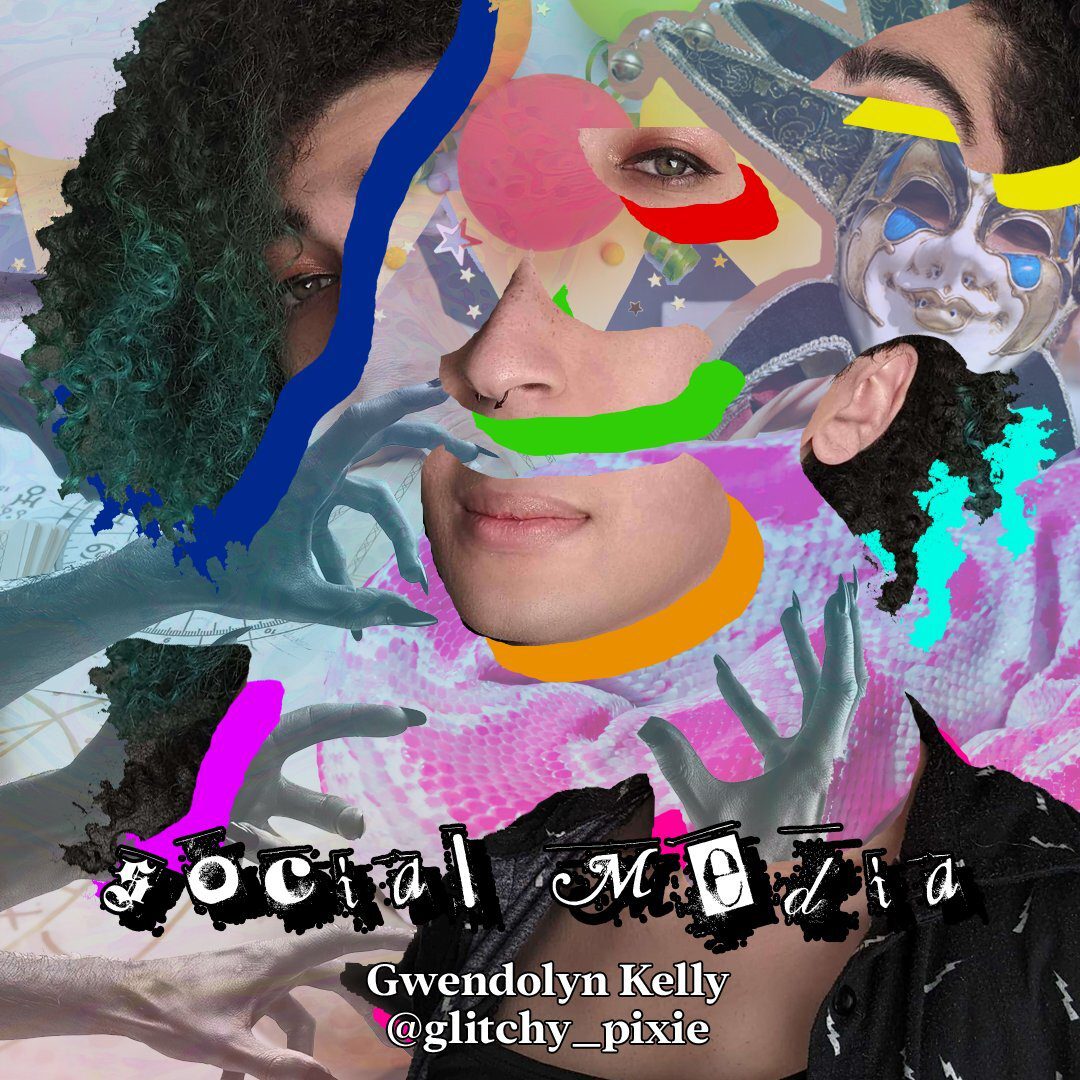
Gwendolyn: It’s sort of funny. My job was basically to present this show and, after I got to see it, I was like, damn, I can’t encapsulate this show in a way that marketing works, right? The game itself and the theme, like the sort of psychedelic horror of it all, is almost a Trojan horse for that hope, right? I can’t lead with hope because that wouldn’t be the same. You wouldn’t understand the story correctly. You wouldn’t understand the hope correctly.
So it is interesting noting that is a very important part of the story that is being told, in terms of the message that is being sent, because that’s not particularly how we tell people about the show. It is something that you have to experience when you watch it, which is why it was so important to get people to really watch it. That message is basically tucked away in there. And you cannot get it from any way that I can explain it to you. No amount of marketing that I can do is going to instill that message, that complicated hope that is embedded in reality.
Stella: I think it’s a very important story to tell too, because you get it from the lens of people who are not white, people who have different experiences and come from these culturally rich backgrounds that are able to tell this story in a different lens. And like we’ve said, we’ve seen games of Bluebeard’s Bride being played by predominantly white tables and that is going to just intrinsically be a completely different story.
I think that with Gwen’s masterful approach in how you presented it and lured people in with this sense of mystery and wonder, trying to puzzle it out and the fantastic performances of the crew, the cast here, putting those pieces, pulling them apart and then putting them together was something very unique.
I don’t think anything like this has been done before with the tools that we have and the way that we did it. And I think it’s wonderful.
Landing us here in that and kind of giving us this, with this idea of hope. What are we all hoping for the future of this medium of actual play and what are we hoping the stories that we get to tell that maybe we couldn’t tell through any other medium?
Stella: Think outside the box. Even if it’s weird, just do it. Just do it.
Gwendolyn: Truly. There were so many times that Hamnah went to me for marketing things. They were just like, you’re going to say no, but I want to tell you this idea. And I never said no. Even the little guerrilla marketing campaign that we did at BigBad, where we were dropping QR codes tied to keys, which was so fun to do. It led to a site that Hamnah built that took you on a little choose-your-own-adventure and would lead to spotlights for the crew, it would lead to trailers, it would lead to some secrets for stuff later. And so I just, I am hopeful for the intentionality behind every single aspect of a production.
I don’t want to see shows that are actually good and are doing something different die on entry because they don’t get promoted post-release.
RK: What I hope for the future of storytelling with an AP is a lot more intentionality. This is the first production I’ve been in where from the get-go, even before session zero, there was intentionality.
Hamnah sent me messages like, hey, this is the crew, this is what we’re dealing with. Going into it and knowing, okay, this is what we’re doing. This is what we’re making. A lot of folks are like, our game is fun. We should show it to everyone, which is fine and fair. I’ve done that. But I think that when it comes to what the space could grow into, I really think that I’d like there to be a space for intentional stories, intentional topics that you’re delving into, with a minding of safety for your performers, for your audience.
Noordin Ali Kadir: Don’t be afraid to tell specific stories. Games already have a story in mind for you, but you can specify that down. I think what I have hoped for is that we’ll start narrowing down what it is. What is this game? And that’s what we did right at the start. It wasn’t just lines and veils. It was, we are doing this. That’s the intention, as RK said. That’s how you start building intentionality into your work. And that means if you build that mindset in from the beginning, then someone like me in your game is going to wander in, going to look at their track and say, so I could try and pretend like this isn’t going to happen.
Or I can say, no, it is going to happen. And I can help build out a specific moment to help make it mean something instead of trying to just resist it.
Hamnah: I think for me, I’m going to go more pragmatic with my answer, which is I would like to do better labor practices in APs. There’s a subsect, I think they’re because of the industry is so muddled right now, where we have kind of combined like games for fun with like home games with people who are doing this as a hobby where they’re storytelling for the art and joy of storytelling versus people who want this to be a career in some capacity.
We’re all in the same space, unfortunately, which means that there isn’t a lot of good language right now when we’re talking about the industry side of things and what it means to put together an AP. Because personally, to be fully transparent, I consider this part of a career, of a building career. So I treated GUDIYA as sort of that project.
All of these people were employed to do the work that they did. And so I would really like to see better labor practices. I would like to see more transparent pay. I would like to see companies actually invest in actual plays, which shout out to Role App, thank you for sponsoring this because without them GUDIYA would not exist.
I would like to see, just in general, more transparency with the actual behind the scenes, logistical ways that we’re making APs and sticking to specific ethical guidelines. Because this is a burgeoning industry, we get to decide what those guidelines are, right? We collectively right now get to decide. We don’t have to follow TV. We don’t have to follow movies or streaming or whatever. If there’s practices we don’t like from there, we don’t have to take them. I would like to see better labor practices in the AP industry.
GUDIYA can be viewed on the Nameless Domain Youtube Channel.
Images courtesy of Nameless Domain
Have strong thoughts about this piece you need to share? Or maybe there’s something else on your mind you’re wanting to talk about with fellow Fandomentals? Head on over to our Community server to join in the conversation!

